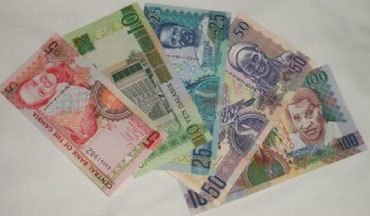
The need for accelerated economic growth in the
There is always a wide gap between available domestic resources or savings and the investment to be undertaken by governments to register economic growth and national development.
The gap reflects, among other things, prevalence of low productivity, low tax revenue, and meagre foreign exchange earnings resulting from weak terms of trade. Thus borrowing to fill the gap, or the deficit, becomes the straw to clutch at.
Despite the sound economic performance being registered by The Gambia over the years, the country has been facing a serious challenge of debt burden both externally and domestically. However the pressure on its external debt was eased some few years ago when it received the ‘golden handshake’ for Highly Indebted Poor Countries (HIPC), through which a substantial chunk of its external debt was offset. But what has been taking a toll on the country’s economy is its increasing domestic debt and the rising payment of interest on such loans, a situation described recently by the International Monetary Fund (IMF) as debt distress. This is because accumulated debt acts as a tax on future output and discourages productive investment by the private sector.
A recent report by the IMF states clearly that The Gambia continues to face a heavy debt burden. As at end-2010, the country’s domestic debt had risen to almost 30 per cent of GDP. Furthermore, the IMF report states, interest on domestic debt has consumed an increasing share of government revenues (18 per cent in 2011).
Moreover, the report added, the most of domestic debt consist of short-term Treasury bills, which poses substantial rollover risks.
The IMF mission to The Gambia also noted that despite a large reduction in external debt under the Highly Indebted Poor Countries (HIPC) Initiative and the Multilateral Debt Relief Initiative (MDRI) in December 2007, external debt indicators suggest that “The Gambia is still at high risk of debt distress”.
The IMF directors also observed that although the outlook for the economy is generally positive, there are a number of risks, particularly the high cost and rollover risks of domestic debt.
“As at end-December 2011, the outstanding domestic debt [of The Gambia] increased to D9.4 billion, or 8.6 per cent from 2010,” states the latest Monetary Policy Committee report of the Central Bank of The Gambia (CBG). It also added that Treasury bills and Sukuk-Al-Salaam bills combined, accounting for 75.1 per cent of the debt stock, rose to D7.1 billion, or 15.9 per cent.
According to data on the maturity structure of Treasury bills, the 364-day, 182-day and 91-day bills accounted for 65.1 per cent, 20.5 per cent and14.4 per cent of the outstanding stock respectively.
The yield on all the maturities declined in 2011, the MPC report further notes, adding: “The yield on the 91-day, 182-day and 364-day bills declined to 8.07 per cent, 10.18 per cent and 11.85 per cent from 10.10 per cent, 10.53 per cent and 13.09 per cent respectively.”
Another trend worthy of consideration is that most of the domestic debt is derived through the issuing of Treasury bills, which has somewhat direct bearing from commercial banks. This trend is also true for most countries in sub-Saharan
Furthermore, countries that run a budget deficit which is not fully matched by donor flows (foreign aid) often issue domestic debt because the standard policy advice of the international financial institutions is to limit external borrowing at commercial rate. It is also a fact that for countries that have an IMF programme, there are explicit limits on external borrowing at commercial rate.
This situation suggests that most developing countries use the domestic debt market when they do not have access to external resources (or aid flows).
However, the real concern here is that debt distress is a thorn in the flesh of a national economy, because it is a situation where a debtor country’s outstanding debt is so large and rising as a proportion of Gross Domestic Product (GDP) that investment will be inefficiently low without new money or debt and debt service re-productions.
In the case of The Gambia, if her domestic debt has reached a level that the country is classified as debt distress, then the nation’s debt managers have a big task at hand, to ensure the situation is reversed in order to avoid the consequences of debt burden, which among other effects acts as a tax on future output of the economy, by discouraging productive investment by the private sector.
“This is because increase in the production or exports of the indebted country generate revenues that must be used to repay current debt obligations; that is, creditors receive a significant portion of the future returns on investment,” says Sam Omoruyi, Debt Management Adviser of the West African Institute for Finance and Economic Management (WAIFEM).
He further explains: “Put differently, the debt overhang argument is couched in a two-period model.
“In period 1, the economy inherits a stock of debt (from previous times) that it must repay in period 2. In period 1 the country may decide to invest and get the return on this investment in period 2. But the country knows that the creditors (lenders) will try in period 2 to extract as many of the benefits as they can from the decision to invest. Debt thus becomes a tax on the country’s resources, possibly deterring profitable investment opportunities. As the face value of the debt increases from zero to infinity, the returns associated with the debt may initially go up, next pass through a maximum and then go down as the debt wipes out all investment opportunities.”
Omoruyi also proffers some solution: “The simple remedy is to write of any debt proven to exceed the threshold… for which the returns are maximal. If creditors insist on keeping the face value of the debt above [the threshold] in their books, the debtor country will scale down its investment decisions appropriately.”
The IMF directors, who visited The Gambia recently to assess the country’s economic performance, however welcomed the improved fiscal performance and supported the government’s plans for additional fiscal consolidation in the period ahead. They also agreed that further fiscal adjustment aimed at curbing domestic borrowing is appropriate.


